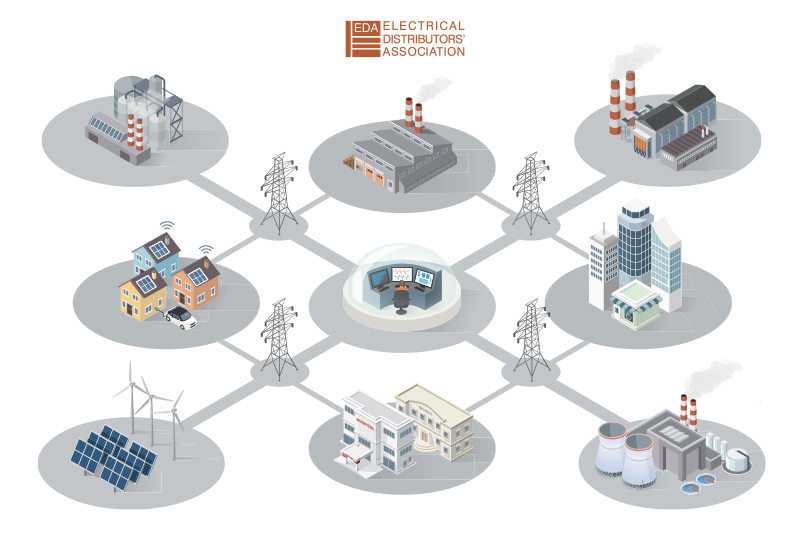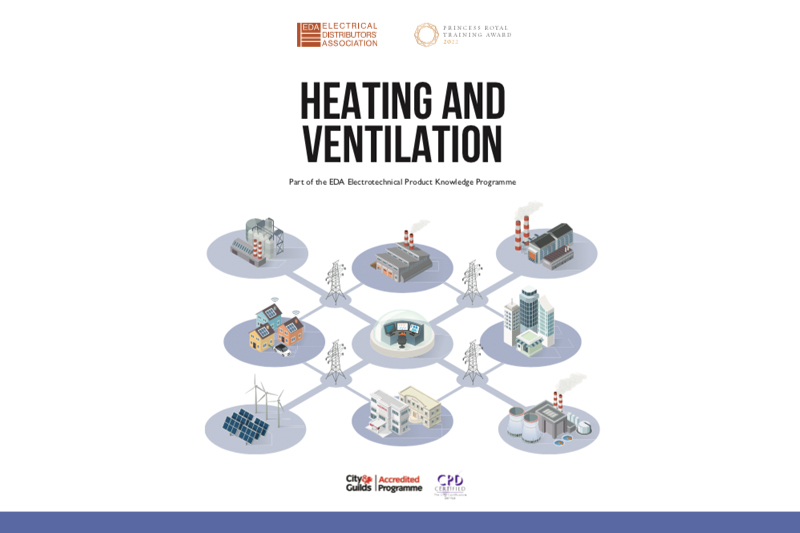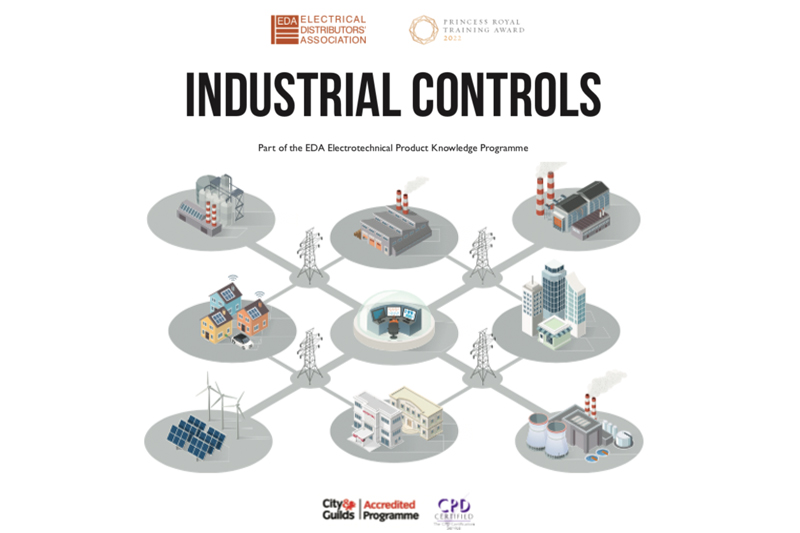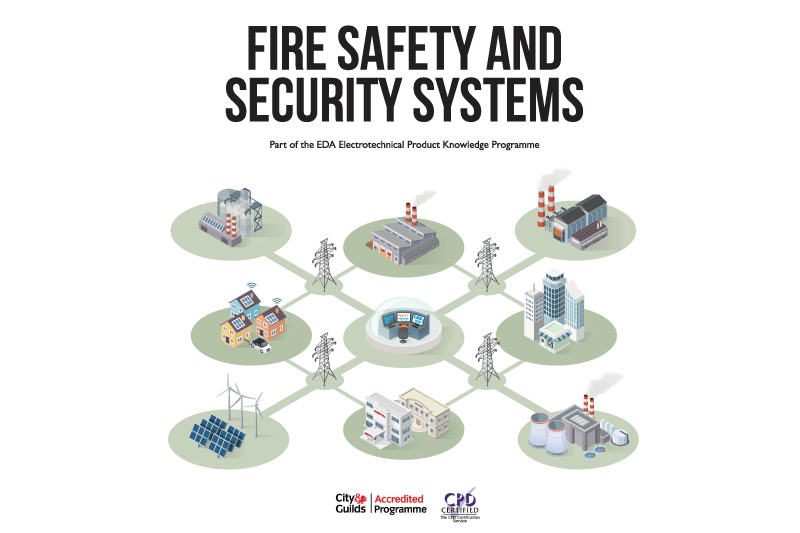If your customers work in industrial sectors – anything from agriculture to automotive, food production to utilities – you might want to check that you are making the most of your cross-selling and up-selling opportunities.
In this issue we are focusing on Industrial Controls, one of the EDA’s suite of 12 distance-learning training modules – part of the Product Knowledge Programme.
Professional know-how to drive sales
Improving your team’s technical know-how through the EDA’s training could unlock additional revenue for your business. This training course covers:
- Switches and Indicators
- Relays and Contactors
- Fuses and Breakers
- Motors and Motor Control
- Power Supplies
- Enclosures and Panel Layout
- Programmable Control and Automation
- Sensing and Instrumentation
- Environmental Considerations
- Trends in Industrial Controls
Years of knowledge condensed into one training course, giving your team a commercial edge
City & Guilds accredited, this training programme harnesses decades of combined expertise from product experts at EDA manufacturers and allied trade associations to create an accessible and practical training opportunity for you and your team.
EDA Product Knowledge modules are also approved for Continuing Professional Development by The CPD Certification Service.
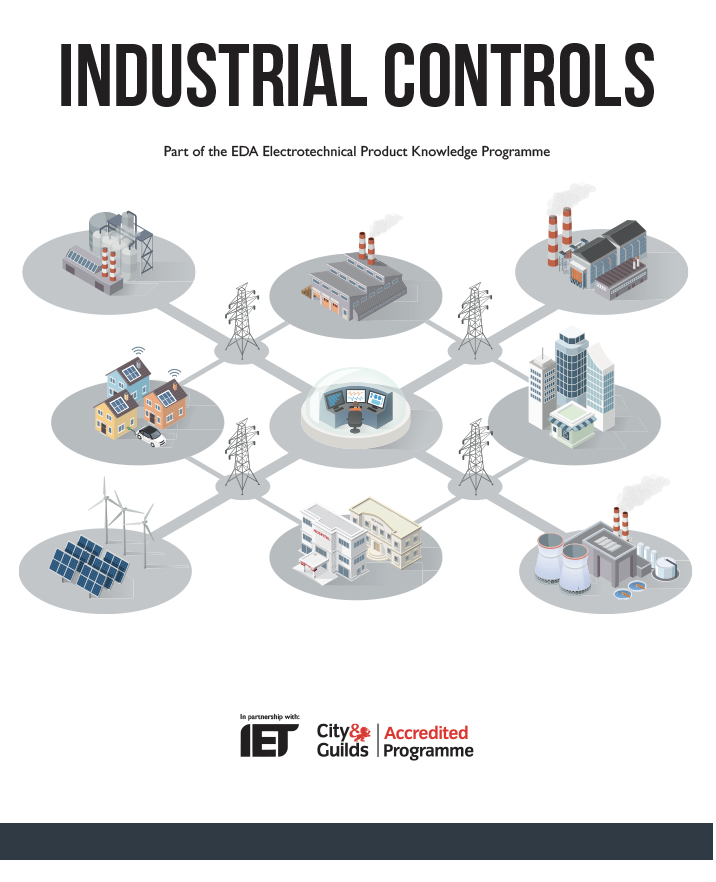
Test your knowledge
Have a go at this quiz sampled from the Industrial Controls training textbook.
Check your answers below and if think you need to improve your team’s know-how so your business can boost sales, talk to the EDA today.
Download the Course Directory
There’s plenty of information available at www.eda.org.uk including a downloadable Course Directory, giving you a summary of what’s covered in every one of the 12 training modules.
The EDA team is ready to help. Call 020 3141 7350 or email training@eda.org.uk
Test your knowledge
Q1: What electrical property of a cable determines how much heat is generated?
Q2: A customer wants to use a pushbutton rather than a switch to turn a light on and then off again. She has bought a button from a retailer that is marked as a momentary and is complaining that it only works when held in and therefore must be faulty. What advice do you give?
Q3: Why are electrical terminals on equipment designed to offer IP2x protection?
Q4: If a device conforms to a SIL rating, what does this mean?
Q5: What is the main difference between a solenoid and a control valve?
Q6: What is required to write and download PLC programmes?
How did you do?
Full marks: fantastic, your sales must be looking very healthy.
3 – 5 out of 6: not bad. Could the EDA training help you to fill in any gaps in your knowledge?
Less than 3: the EDA Product Knowledge Programme could be just what you need to boost sales.
ANSWERS
Q1: Resistance
Q2: You offer her a latched device that is just the job. You then explain that the momentary pushbutton is doing its job, perhaps using the example of a door bell.
Q3: IP2x provides protection for fingers. This significantly reduces the risk of someone working near equipment with live terminals making inadvertent contact with live parts.
Q4: The device has been specifically designed to operate in a safe and reliable manner suitable for use in a safety related system.
Q5: A solenoid valve is used to either open or close a pipe (shut off), whereas a control valve is used to regulate the flow.
Q6: PLC programmes are typically developed on a PC using special software. These are downloaded using a serial or Ethernet cable.

